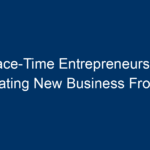The digital landscape is rapidly evolving, and frontend development is at the forefront of this transformation. In 2023, developers are faced with an array of new tools, frameworks, and methodologies that are reshaping how they create engaging user experiences. This article will explore the top trends in frontend development, providing insights that can help developers stay ahead in this fast-paced environment.
The Rise of JAMstack Architecture
What is JAMstack?
JAMstack, which stands for JavaScript, APIs, and Markup, has gained significant traction in 2023. This architecture decouples the frontend from the backend, allowing for faster load times and better security. By leveraging static site generators and headless CMS, developers can create efficient and highly performant applications.
Benefits of JAMstack
- Improved Performance: Since the frontend is served as static files, the loading time is significantly reduced.
- Enhanced Security: With no server or database to exploit, the attack surface is minimized.
- Scalability: Websites can handle high traffic easily, as they rely on CDN (Content Delivery Network) for delivery.
Popular Tools in JAMstack
Some of the popular tools in the JAMstack ecosystem include Gatsby, Next.js, and Netlify, which help streamline the development process.
Emphasis on Accessible Design
What is Web Accessibility?
Web accessibility ensures that websites and applications are usable for people with disabilities. In 2023, there is an increased emphasis on creating inclusive digital experiences.
Importance of Accessibility
- Wider Audience Reach: By focusing on accessibility, developers can cater to a broader audience.
- Legal Compliance: Many countries have regulations mandating accessibility standards.
- Enhanced User Experience: Accessible designs promote a more user-friendly interface.
Tools to Enhance Accessibility
Tools like Axe, Lighthouse, and Wave can help developers identify accessibility issues in their applications, ensuring compliance with standards like WCAG (Web Content Accessibility Guidelines).
The Shift to Single Page Applications (SPAs)
Understanding SPAs
Single Page Applications (SPAs) have become increasingly popular due to their ability to offer a seamless user experience. Instead of loading new pages for each user action, SPAs dynamically update content, significantly enhancing performance.
Advantages of SPAs
- Faster Navigation: SPAs reduce the amount of loading time as only specific content changes.
- Improved User Experience: Enhanced interaction leads to user satisfaction and engagement.
- Easier Development: SPAs can be more straightforward to maintain and develop than traditional multi-page applications.
Frameworks for SPA Development
React, Angular, and Vue.js are some of the leading frameworks that facilitate SPA creation, offering features that simplify complex state management.
Micro Frontends: A New Approach
What are Micro Frontends?
Micro frontends extend the microservices architecture to the frontend world, allowing different teams to work on various aspects of a single application independently. This trend is particularly useful for large applications with multiple teams.
Benefits of Using Micro Frontends
- Team Autonomy: Teams can develop, test, and deploy features independently, improving productivity.
- Scalability: This approach can handle growing applications more efficiently.
- Technology Agnosticism: Teams can choose technologies best suited for their specific needs without being tied to a single stack.
Tools for Micro Frontends
Tools like Module Federation (from Webpack) and Single-SPA facilitate the implementation of micro frontends, allowing for cohesive integration and user experience.
Performance Optimization Techniques
Why Performance Matters
As user expectations rise, the importance of performance in frontend development has reached new heights in 2023. Faster applications lead to higher user satisfaction and retention.
Key Performance Optimization Techniques
- Code Splitting: Implementing code-splitting techniques can reduce initial loading times by splitting the code into smaller chunks.
- Lazy Loading: Loading images and other non-essential resources only when needed can significantly improve performance.
- Minification and Compression: Minimizing CSS and JavaScript files reduces the amount of data sent over the network.
Tools for Performance Measurement
Tools like Google PageSpeed Insights, GTmetrix, and WebPageTest help developers monitor and enhance the performance of their applications effectively.
Integrating Artificial Intelligence
The Role of AI in Frontend Development
Artificial Intelligence (AI) continues to penetrate the world of frontend development, automating various tasks and providing intelligent solutions.
How AI is Transforming Development
- Automated Testing: AI-driven testing tools can identify bugs and performance issues much faster than manual testing.
- Personalization: AI can help customize user experiences based on behavior and preferences, making applications more engaging.
- Chatbots and Virtual Assistants: AI-powered chatbots can enhance user interaction and support, providing immediate responses.
Conclusion: Embracing the Future of Frontend Development
As we navigate through 2023, the trends in frontend development continue to evolve, driven by advancements in technology and changing user expectations. By adopting frameworks like JAMstack and embracing concepts like micro frontends and AI, developers can create faster, more accessible, and user-friendly applications.
Actionable Insights
- Stay Updated: Regularly follow industry blogs, podcasts, and webinars to stay informed about the latest trends and technologies.
- Emphasize Performance: Continuously test and optimize the performance of your applications to meet user expectations.
- Prioritize Accessibility: Make accessibility a priority in your development process to ensure inclusivity.
By keeping an eye on these trends and implementing best practices, frontend developers can effectively shape the future of web development, creating experiences that delight users and stand out in an increasingly competitive landscape.




